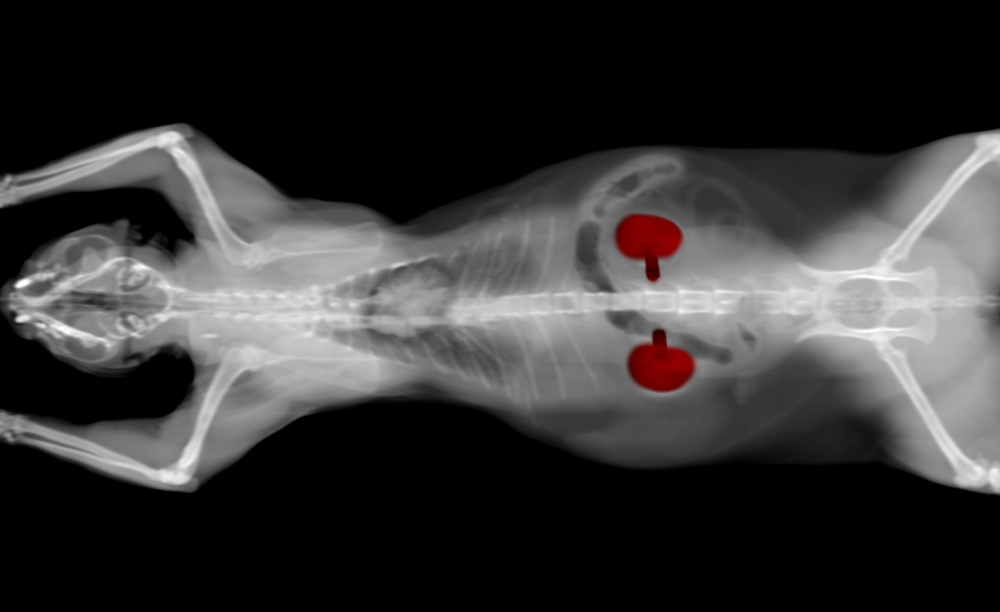Chronic kidney disease (CKD) affects around 1% to 3% of dogs and cats overall, but up to 10% of older dogs and 35% to 50% of older cats. Despite the high prevalence, many affected pets are diagnosed late in the disease process, which can reduce the effectiveness of many treatments. New diagnostic test protocols allow early detection, which can provide a better prognosis and longer life expectancy. The Oliver Animal Hospital south Austin veterinarians share answers to your questions about kidney disease diagnostics and early treatment strategies.
Question: What is chronic kidney disease in pets?
Answer: In pets with CKD, the functioning kidney cells are damaged and lost, overall kidney function is reduced, and their disease becomes progressively worse. The kidneys filter waste, manage water and mineral levels, and help regulate several hormonal processes, including red blood cell production and blood pressure management. As a pet’s kidney function declines, so does their overall health and wellbeing.
Q: What causes chronic kidney disease in pets?
A: Pets in their senior years are the most likely population to develop CKD, although many underlying diseases or conditions can lead to the disease. However, because the cause is likely multifactorial and cumulative over a lifetime, a primary cause is seldom identified. CKD can also follow an acute illness that affects the kidneys, including infections, auto-immune diseases, blood clots, cancer, or genetic disorders.
Q: What are chronic kidney disease signs in pets?
A: Pets do not display any outward signs during CKD early stages, because their healthy kidney cells work harder and compensate for failing cells. But, once about two-thirds to three-quarters of their kidney function is lost, pets may begin showing the following signs:
- Drooling, nausea, or vomiting
- Poor appetite
- Weight loss
- Increased thirst and urination
- Lethargy
- Bad breath
Q: What tests do veterinarians use to diagnose kidney disease in pets?
A: Our veterinary team will order blood, urine, and imaging tests if we suspect your pet’s kidneys may be functioning suboptimally or causing your pet to feel sick. We look specifically at the following components:
- Blood urea nitrogen (BUN) — This value increases with dehydration, which can cause or be caused by CKD.
- Creatinine — This blood value is the most reliable traditional kidney function indicator, but can be affected by muscle condition.
- Urine specific gravity — The urine concentration is a good kidney function indicator.
- Urine protein level — Protein leaking into the urine indicates a problem with kidney blood filtration.
- Kidney appearance — Abnormal kidneys may appear large, small, dense, or filled with stones on X-rays or ultrasound.
Q: What is SDMA, and how is the test different for pets?
A: Traditionally, the best kidney function indicators have been creatinine and urine specific gravity, interpreted alongside other blood and urine test results. However, this created a problem, because creatinine does not rise above the reference range until late-stage disease, around the same time that clinical signs are seen and the majority of kidney function has been lost. A new test, called symmetric dimethylarginine (SDMA), solves this problem by detecting kidney function changes up to 18 months before other blood markers and is reliable regardless of body condition.
Q: How can SDMA be used most effectively to detect chronic kidney disease sooner in pets?
A: Annual wellness screening tests that include SDMA are the best way to harness the power of early disease detection. When we run the test year after year, we can track trends and pick up on CKD in its earliest stages, long before clinical signs develop. Pets diagnosed with early stage CKD have a much better prognosis.
Q: How does early detection using SDMA change chronic kidney disease treatment for pets?

A: The treatment goal for early-stage CKD is protecting and preserving remaining kidney function to significantly extend the pet’s life. This is best accomplished through relatively simple strategies, including a therapeutic diet that reduces kidney workload, and medication that helps prevent protein losses and high blood pressure, which can damage kidneys further. These treatments are far less effective in later stages, which means that pets diagnosed later likely will not live as long.
Early detection is valuable not only for successful CKD treatment, but also for many other disease processes that become more common with age. Annual preventive care visits with wellness screening diagnostics, including SDMA, will allow our team to track trends in your pet’s health. Call us to schedule a visit with our Oliver Animal Hospital team, or if you have questions about your pet’s CKD and other age-related diseases.







Leave A Comment